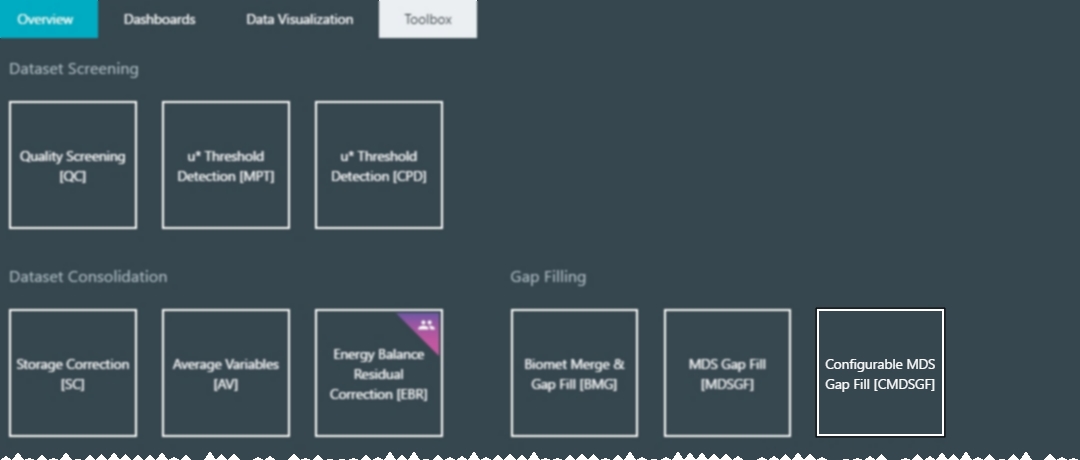Configurable MDS Gap Filling
The Configurable MDS gap filling (CMDSGF) tool generalizes and extends the use of the traditional MDS gap filling tool (MDSGF hereafter). It uses the same C code base with minor modifications implemented by the same ICOS-ETC team that developed the original C code.
In addition to the operations allowed by the MDSGF tool, this tool enables the following features:
- In addition to FCO2, H and LE, it can be used to gap fill any flux variable, e.g. FCH4
- It allows the use of one, two, or three drivers, chosen freely among the available variables. For each driver, a single tolerance or two tolerances (low/high) can be setup.
- It allows splitting the flux time series into time windows, such that the gap filling algorithm operates only with data within each window. The tool then reconstructs the entire time series from the individual gap filled windows.
- Drivers can be specified independently for each window.
- Transition between windows can be “sharp” (selecting a Transition Date) or “smooth” (selecting a Transition Period).
- For smooth transitions, the user can decide a blending method from among 5 alternatives. See the online help for more detailed explanations.
When executed with the “FLUXNET settings” – which coincide with the default values in the MDSGF tool and with the Reichstein et al.’s original suggestions – this tool provides identical results. Therefore, the MDSGF tool can be seen as a specific instance of this Configurable MDS tool.

